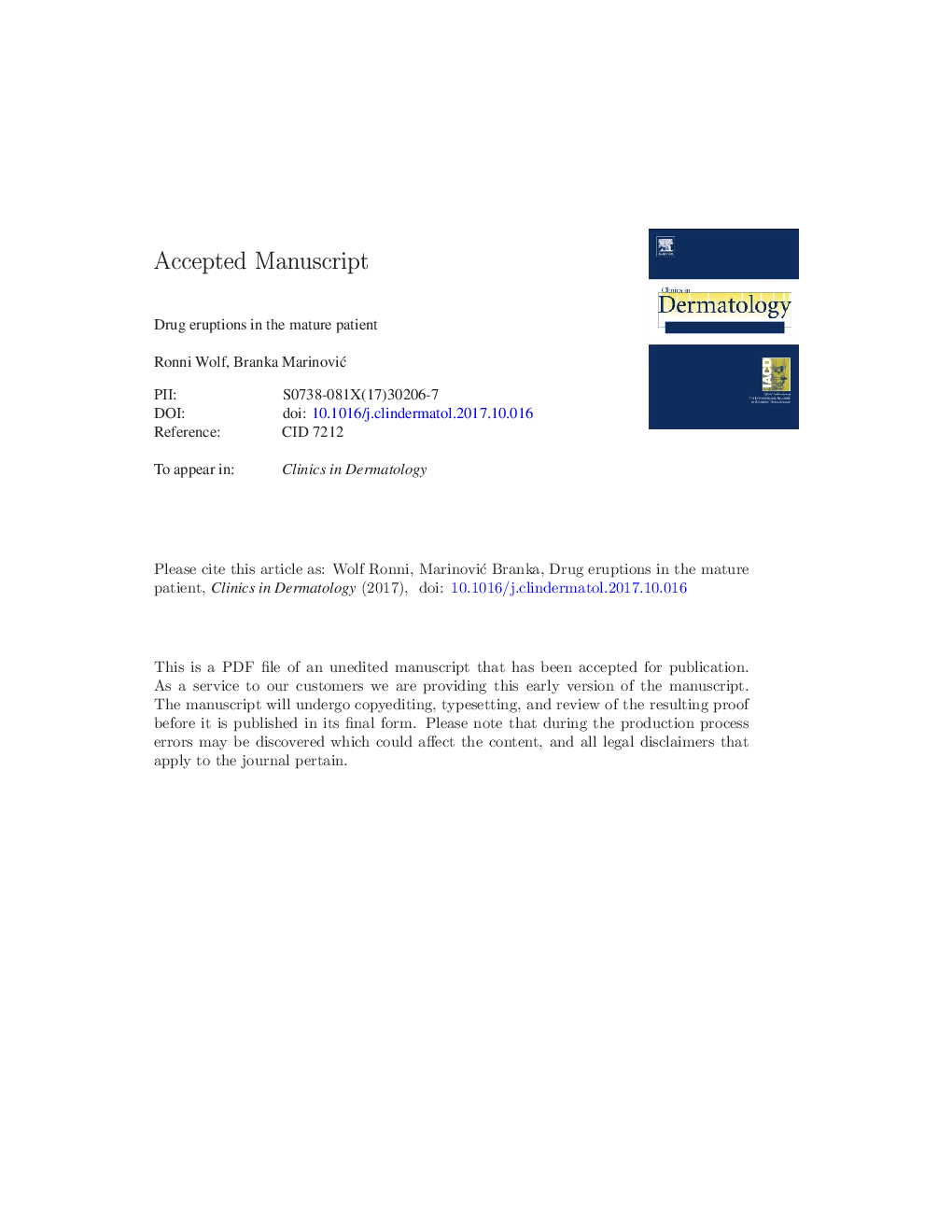| Article ID | Journal | Published Year | Pages | File Type |
|---|---|---|---|---|
| 8712344 | Clinics in Dermatology | 2018 | 16 Pages |
Abstract
The world's population is now ageing at an unprecedented rate. Declining fertility and improved health and longevity have generated rising numbers and proportions of the older population in most parts of the world. With advancing age, however, comes an increasing incidence of disease (comorbidity or multimorbidity), an increasing use of medications (polypharmacy), and consequently an increase in adverse drug reactions (ADRs). Age-related changes in pharmacodynamics and pharmacokinetics (eg, volumes of drug distribution, metabolism and clearance, altered drug responsiveness and toxicity) and greater vulnerability to ADRs are other reasons for the higher incidence of ADRs in the elderly compared with young adults. Because the clinical patterns of ADRs are very similar for all age groups, including the elderly, the present review will deal mainly with statistics and numbers, rather than the clinical and/or disease patterns.
Related Topics
Health Sciences
Medicine and Dentistry
Dermatology
Authors
Ronni MD, Branka MD, PhD,
